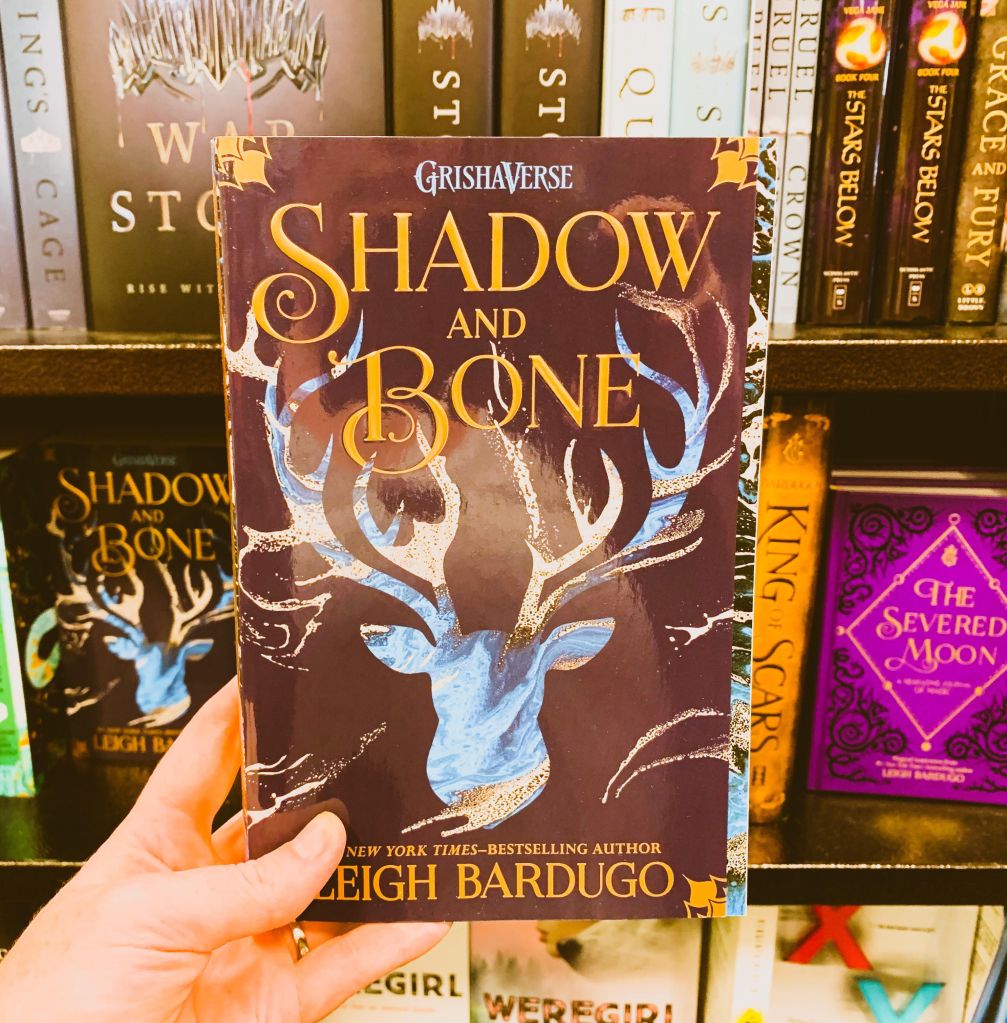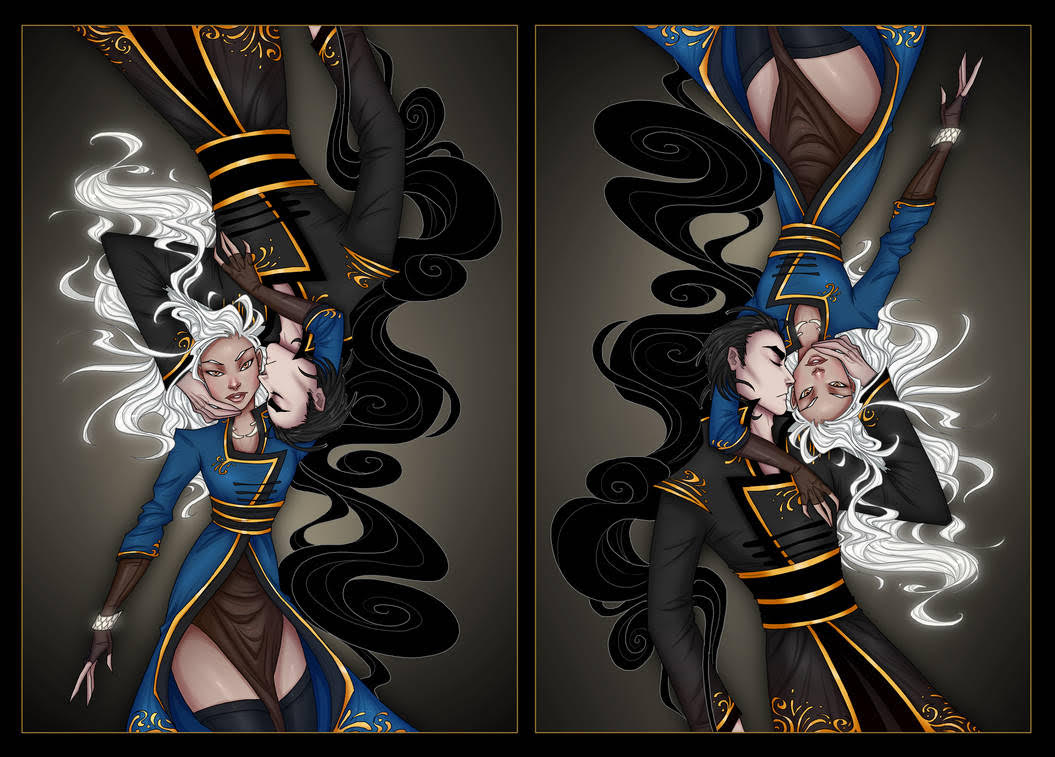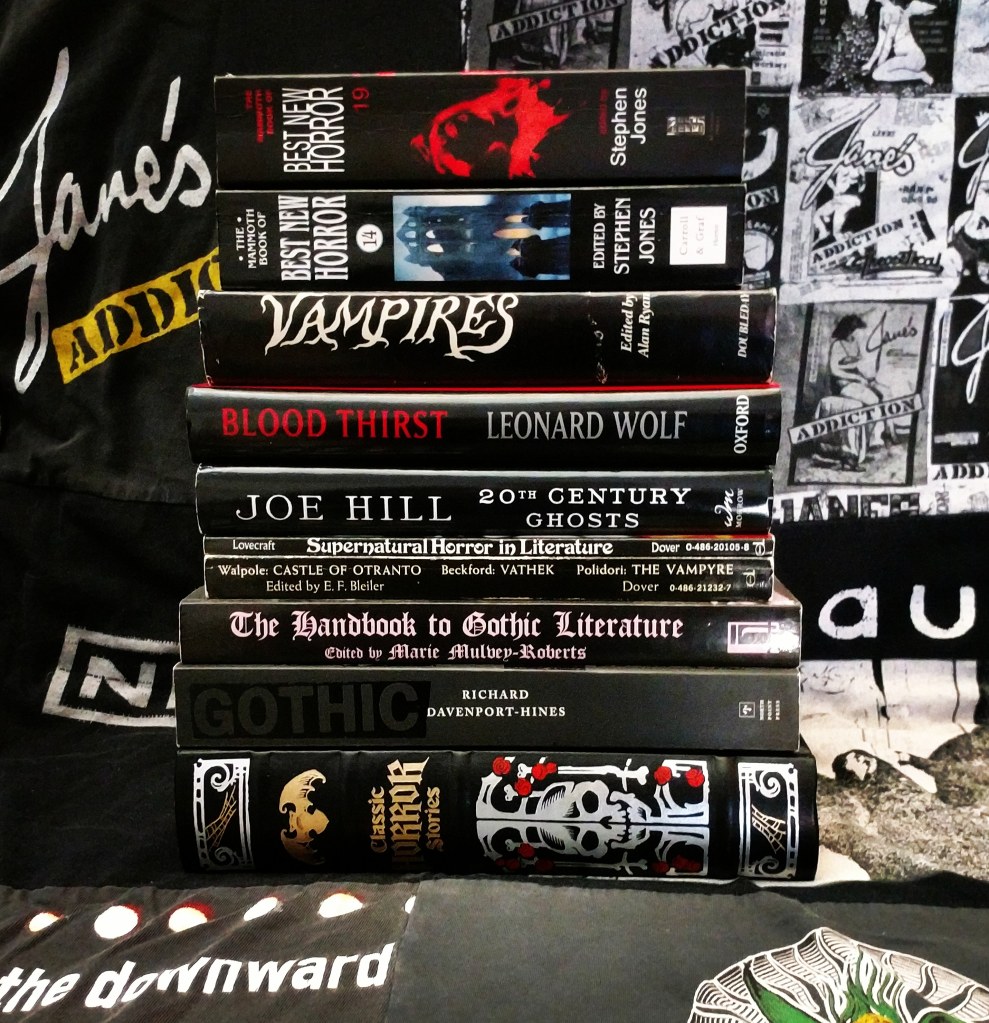
Shadow & Bone by Leigh Bardugo was exactly what I hope for in a YA fantasy- it’s got intricate world-building, engaging characters, action, and a splash of romance. I can see why Bardugo & her Grishaverse has such a fervent fandom!
This is a familiar story: a young girl, an orphan even, discovers that she is special, that she is indeed the only person who can save the world. It’s the story in Twilight, in Divergent, in Children of Blood and Bone, and you know the list goes on! So what makes one story stand out from the others? One thing that sets Shadow & Bone apart is the setting; while there are many fantasies set in ye olde England or super future dystopia, this is the only one I know of set in a land modeled after early 19th Century Russia. It has a lovely, cold, foreign feel to it. I listened to the Audible version in my car, so I was also treated to Russian accents.
We meet Alina Starkov and Mal Oretsev as they are marching with the army towards what is known as the Fold, a literal sea of darkness that splits the country of Ravka in two. Alina and Mal are orphans who have been fast friends since childhood. As children, they were both tested for Grisha talents, those magical powers that make you special in this world, and neither of them showed any signs of powers. So instead they become soldiers, heading towards the darkness. The Fold is full of hideous monsters, and very few people survive a crossing. Of course, they are attacked by these monsters, the volcra, and at that moment, Alina bursts forward with an extremely rare Grisha talent. She summons the sun. She is immediately seized by the Grisha and taken to the capitol. There she meets the Darkling for the first time- the dark leader of the Grisha who wants to use her power to save Ravka.
Bardugo takes what is usually a metaphorical battle between dark and light and makes it very literal. The Darkling summons darkness and Alina summons the sun. “Like calls to like.”

So Alina & the Darkling are drawn to each other and then you have a sweet little triangle when you add Mal. You can’t have a good YA fantasy without some romance, right. And of course, I couldn’t help but fall for the Darkling and his flint, granite, steel, cold eyes (ok, I get it, his eyes are grey!)

Anyways, this was a really fun read, and I’ve already started the second one!
I’m giving this 4 stars (minus the one for repetitive language that pulled me out of the story sometimes)


